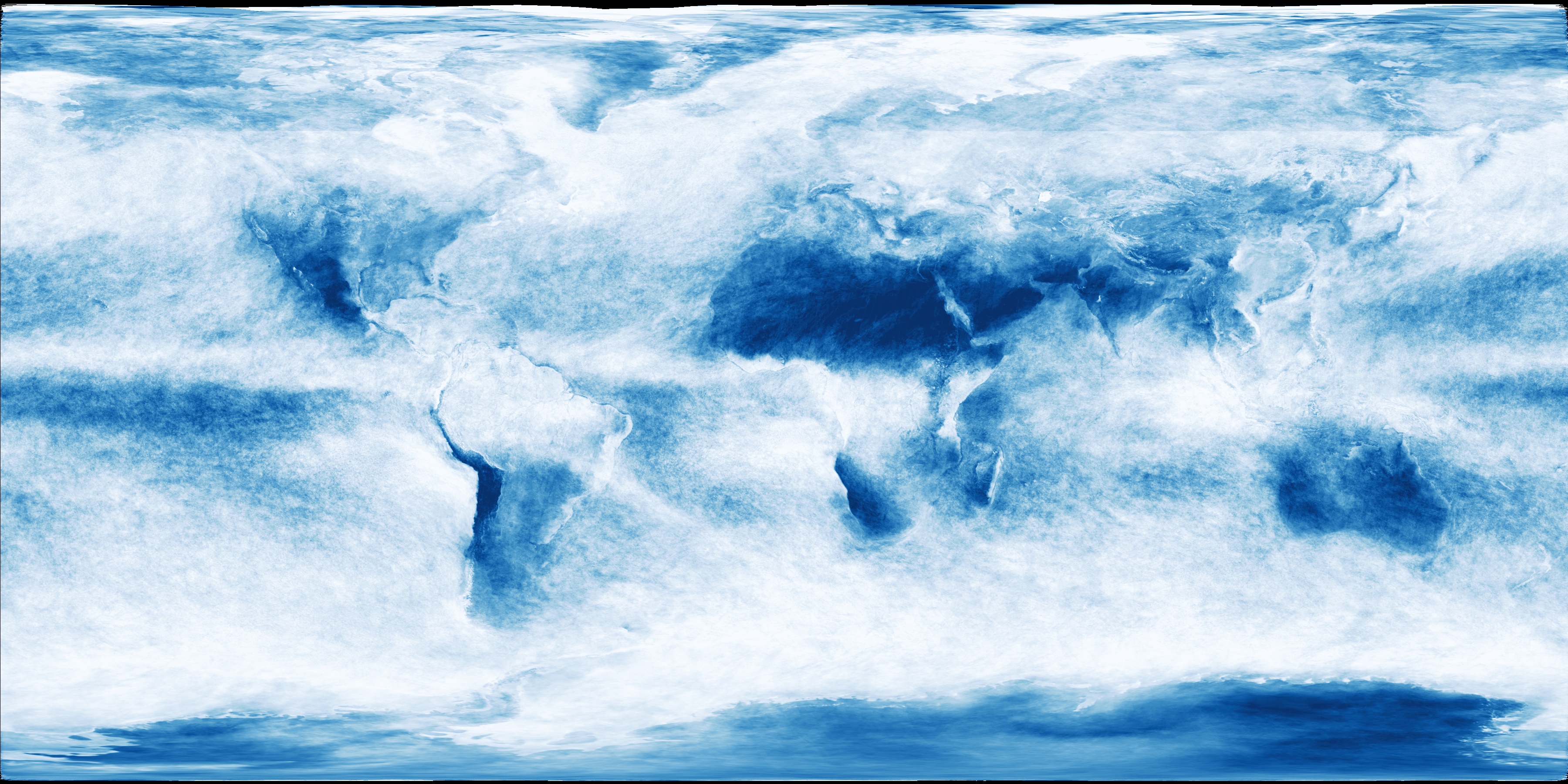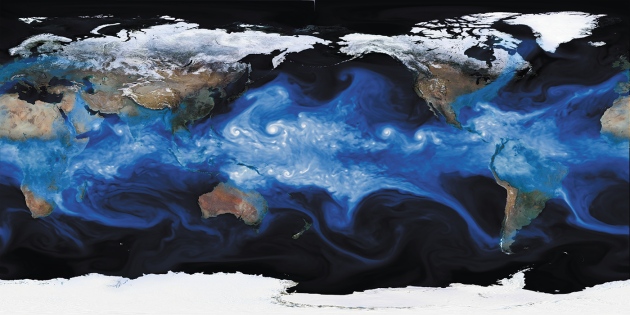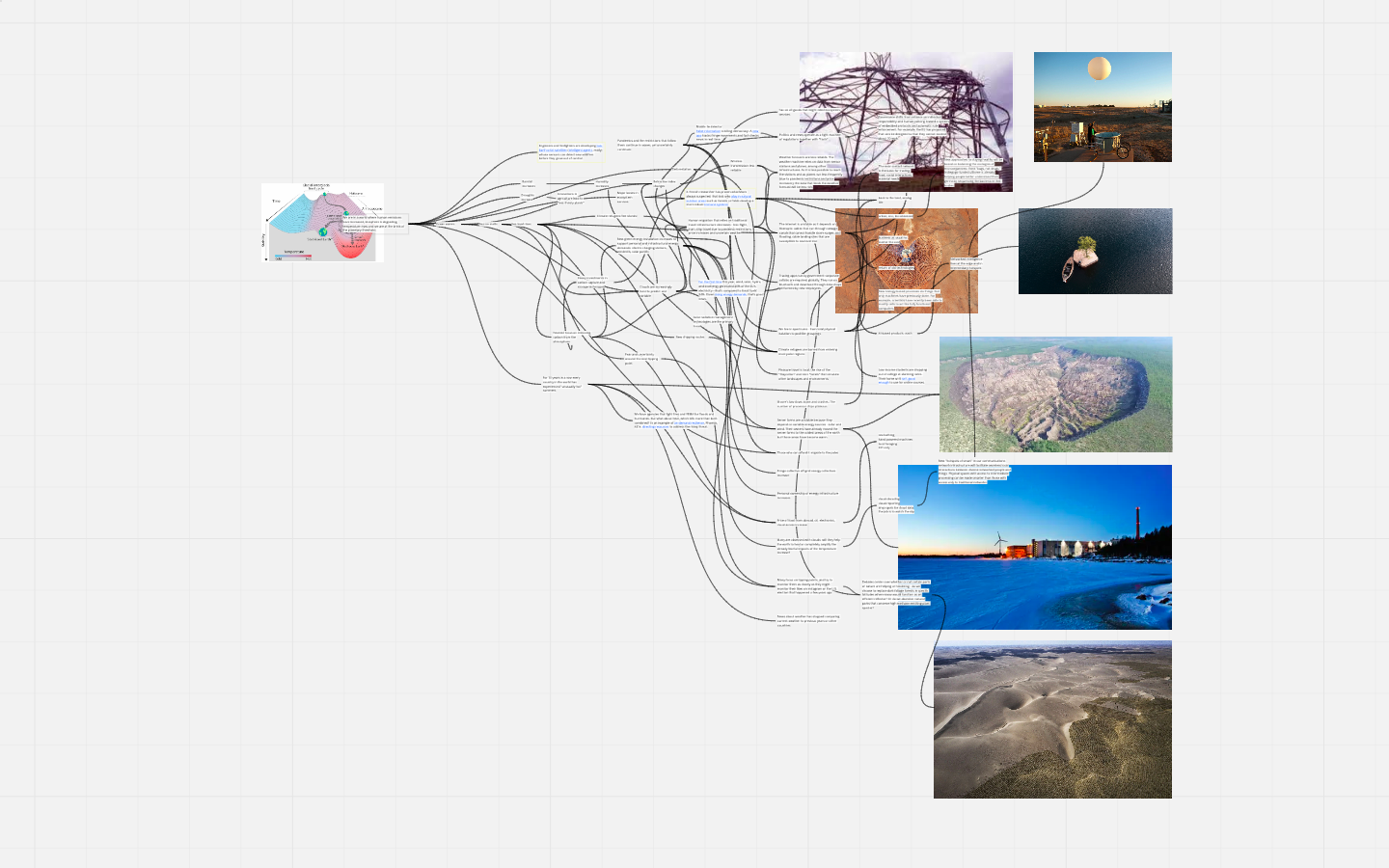Our Futures with Clouds
Clouds are the least known factor in modeling the futures of our climate. And understanding them requires the full set of scientific instruments to run at their highest levels of operation, tracking from just a few hundred meters to the entire surface of the world.





Though clouds are still less known than other factors (even human behavior) that impact our climate, scientists have figured out that as the amount of CO2 in our atmosphere increases, low stratocumulus clouds (that radiate 20% of the sunlight that heads towards us) dissipate. Instead, high clouds form, letting the sunlight directly through. As the temperature rises, clouds are moving towards the poles and higher up, leaving the tropics to face the heat alone.

ppm co2
As the planet heats, the planetary tipping points are tipping more and more towards “tipped”, so permafrost thawing (releasing more greenhouse gases, leading to more heat), and AMOC going amok, and drought and floods and extreme weather events ripping through our carefully constructed infrastructure.

Perhaps the most carefully constructed infrastructure is that of our digital lives, where send whisps of information under the sea and land through fiberoptic cables that use light to communication information. With seemingly endless supplies of electricity, we process the information in efficient algorithms and store it in the “cloud.”
In this present-future, the very mechanisms we rely upon to track the movements and impacts of the atmospheric clouds above us are in fact threatening their own subject.
Because the more computation, non-renewable server-based storage we use, the more CO2 we create. And the more CO2 we create, the more the low clouds will cease to protect us from the sun that will shine through. Humidity rises, signal strength decreases, and the radio signals that float from satellites to earth become interrupted. Storms are more frequent, and the planes that track the clouds stay on the ground. Radio towers bend in the wind. Internet landing sites on coasts across the world are threatened by the rising waters.





So what?
How else might we communicate about the state of the clouds in the now-near-futures? I brainstormed around the prompts of what is most worrying and most hopeful in the scenario.
From there, I envision a cloud clock and a cloud phone to meet the needs of that corner of the future.
 The cloud phone is an audio-based sensor, emitting no noise when there is no sun, to help us track and record the amount of clouds in the sky over each station’s head.
The cloud phone is an audio-based sensor, emitting no noise when there is no sun, to help us track and record the amount of clouds in the sky over each station’s head. The cloud clock keeps track of how many clouds there are in our sights. We focus the cloud clock’s window on the sky and record what kind of clouds we see throughout the day.
The cloud clock keeps track of how many clouds there are in our sights. We focus the cloud clock’s window on the sky and record what kind of clouds we see throughout the day.Ideally, if continuing this research, I would seek to explore and understand indigenous ways of knowing more deeply. Based on my research, the ability of indigenous tribes to forecast the weather (one of the most urgent needs from tracking the clouds) is something to be celebrated, recognised and learned from. For example: Afar pastoralists in North eastern Ethiopia, the aboriginal and Torres Strait Islander people, the Māori people, and the First Nations people.
More here: https://cloudsabove.us/2/

